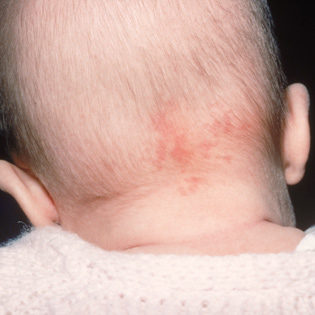Marina | March 3, 2014 | Parenting |

All parents of new babies know every inch of their child from head to toe. So if you see a mark on your child, you might be anxious to learn what it is and how it might affect your child.
Here is a list of different types of marks that may naturally occur on a baby’s body – they can appear anywhere including the face, trunk, arms and legs or extremities.
Mongolian Blue Spots: Most common in children of African, Hispanic, North-American or Asian heritage. They are blue or grey bruise-like patches that appear normally at the base of the spine. There have been cases where doctors unfamiliar with this type of birthmark have informed Social Services suspecting that the child has suffered a non-accidental injury. But they are a natural phenomenon and will disappear over time, usually by two years of age.
Cafe au Lait Spots: Brown or light brown flat, irregular patches of skin that can change in size and darken in colour as the child ages. They are permanent but harmless. However, if your child has more than six such patches, and the patches are larger than a ten-pence piece, then you should consult your GP as they can be a sign of neurofibromatosis (abnormal nerve tissue growth).
Strawberry Hemangioma: These are very common and are usually the ones that cause most concern for parents because they are raised and red – they can look like strawberries, in fact, and whilst that may not be a problem on a child’s foot, for instance, it may cause concerns if it appears on the child’s face. They’re sometimes there at birth but usually appear in the first few weeks. Many simply fade and disappear by the time the child is ready to start school, but others require surgery and/or laser treatment. Treatment is normally only necessary if it becomes a problem, e.g. by bleeding, getting bigger, or obstructing vision or the mouth.
Stork Bites: Pink/peach coloured small marks usually at the back of the neck that usually disappear by the age of two. They can be treated with lasers to lighten the pigment but they can re-appear.